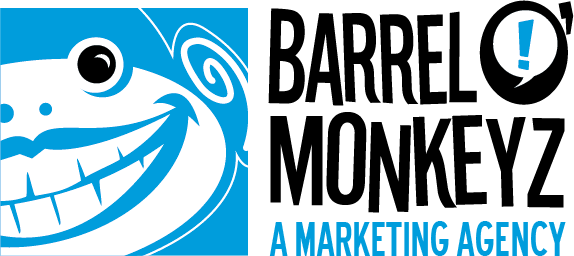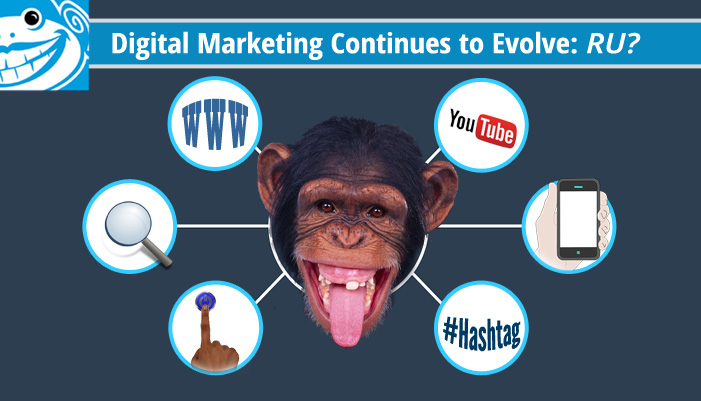It occurred to me the other night as I was walking some friends who were over for dinner out to their awaiting Uber ride that summer is winding down. There was a little nip to the air and a shortness to the day that wasn’t there just a few weeks ago. Of course, this being SoCal, the change of seasons is subtle and not as transformational as it would be for someone living up north (in other words, I won’t be retiring my flip-flops or tees just yet). But the shift from summer to fall is important none the less. Businesses are entering the home stretch of the calendar year, hoping that a strong Q4 puts them over the top (or as close to their goals as they can get), while also looking ahead to 2018. For many, this is the season of planning and thinking big. So in the spirit of looking forward to Q1 of 2018, let’s look back for some food for thought at a previous blog from 2016—one that explores some of the basic concepts of effectively communicating your brand story in the digital age. Enjoy!
The transition away from what’s known as “traditional marketing”—what we, back in the day, simply called “marketing”—is accelerating. Newspapers and magazines large and small are forgoing print editions in favor of online versions; and even billboards are getting digital makeovers. In its place, the ever-evolving world of “digital marketing” is firmly taking root. First came websites, email marketing, and banner ads, and now we have interactive social networking and platforms such as Instagram, Facebook, and a host of other technologies that are increasingly mobile, customize-able, and interactive.
But just because the “tools of the trade” are changing, does that mean the tenets of successful marketing are changing as well?
To this King Monkey’s finely tuned marketing ears, the phrase “traditional marketing” conjures images of tangible items such as running ads in newspapers and magazines, on billboards, TV, and radio; printing brochures and business cards—and even holding special events at a physical venue such as a place of business.
Utter the words “digital marketing” and my brain is suddenly awash with thoughts of smart phones, YouTube videos, Facebook, and millions of other online venues ranging from e-commerce websites to a plethora of social media platforms.
Again, while today’s marketing tools certainly differ, is what’s important for success radically different?
Nowadays, as is/was the case with traditional marketing, your main concerns remain:
- Identifying your target audience,
- Creating a brand story/message that compels your audience to buy your product or service (vs. a competitor),
- Finding the right channels to reach your audience, and
- Delivering your product in a way that keeps customers coming back and wanting to refer you to others.
For example, as a satisfied customer “back in the day,” you might have called a friend on the phone or demonstrated face-to-face how your shiny, new “what’s-it” was all you hoped it would be and more. Nowadays, you might post a video of that same shiny, new “what’s-it” on YouTube and recommend it to hundreds of friends via Facebook, all in a matter of minutes.
Yes, it still amounts to what is essentially a word-of-mouth referral, but the efficiency and reach of your referral is exponentially greater.
The Power of Digital Marketing
Therein lies the power of digital marketing: the opportunity for marketers to share their messages with large audiences over multiple channels, and then to have those audiences share their own experiences of the brand with ever-increasing numbers of others in an ongoing dialogue/process that creates buzz and top-of-mind awareness.
Better yet, digital marketing can often better target greater numbers of people at a fraction of the cost of traditional marketing. Place a print ad in the local daily, and you’re hoping that it finds the eyes of your target audience on that particular day and that those reading it are motivated to buy at that particular time. It’s really hit or miss. Digital marketing, however, gives your message “legs” and a better chance to find the eyes of a target buyer.
You. Can. Break. The. Internet
Set Yourself Up for Digital Marketing Success
Companies that know themselves and know their customers best will enjoy the greatest success in the evolving mix between digital marketing and traditional. The ability to adapt to changing technology and consumer trends is critical. One place every business can start, regardless of size, is to know the company’s mission (what you’re all about and the brand promise you bring to the marketplace) and then develop a brand message that engages target buyers regardless of the medium.
Paul June is King Monkey of BARREL O’MONKEYZ, a San Diego-based strategic marketing agency specializing in Sports and Active Lifestyle markets. We serve as a seasoned, outsourced marketing team for companies looking to ramp up sales and launch new products. Our barrel is full of talent and creative arms ready to prove we don’t just monkey around!

